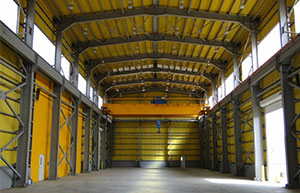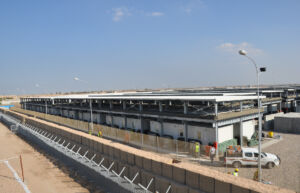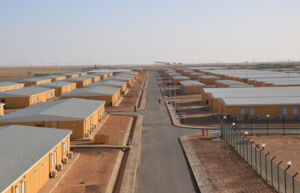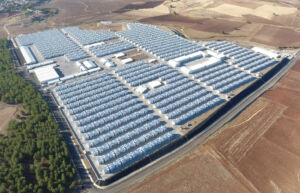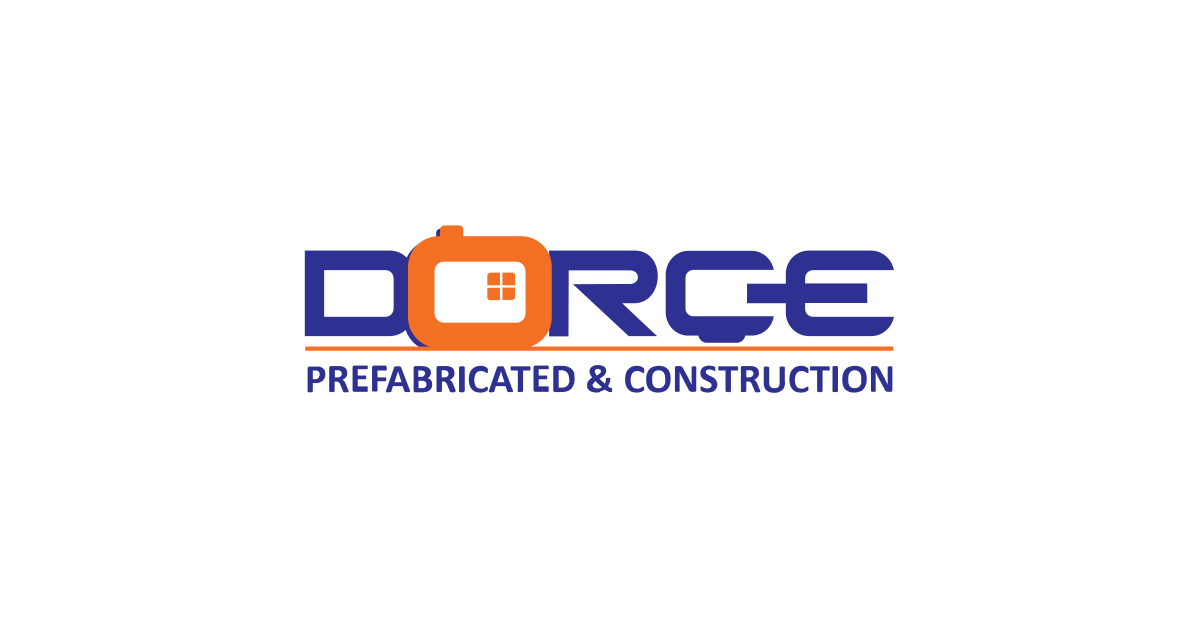
The article of the Manager of the Engineering, Design and Project Management department of Dorce Inc. was published in The INTES CONSTRUCTION INDUSTRY magazine
In July, The INTES CONSTRUCTION INDUSTRY magazine will publish an article by Muhsin RAHMATI, Manager of the Engineering, Design and Project Management department of Dorce, on the topic “Advantages of pre-assembled cold formed-steel prefabricated structures”.
Prefabrication has recently become a preferred building model for large and repetitive buildings. Developing countries have become the biggest buyers of prefabricated buildings due to their lacking capacity to deliver suitable material to the construction site.
Lack of resources such as designers, expert managers, expert workers and easy material access, which can only be found under factory conditions, have made prefabrication a suitable option for project developers suffering from them.
Contrary to what is mentioned, although all resources are available in developed countries, the resulting cost may hinder project development. However, in developed countries, prefabrication provides the advantage of economical manufacturing by reducing the costs.
Transportation should be minimized as it is a cost-increasing factor. There are many reasons why steel is a preferred material in prefabrication. The tensile and compressive stress capacity of steel is higher than its weight and cost. Steel can be produced with less tolerance. It is extremely durable and has high quality and standards when used correctly. These qualities make steel a more ideal material than other alternative materials.
One of the most commonly used elements in prefabricated steel structures is cold-formed (light) steel elements. Heavy steel structural members are used in wide spans or building sections subject to heavy loads.
One of the reasons why cold-formed steel elements are used in prefabricated structures is that the data (information such as cutting and bending) created by CAD (Computer aided design) based programs can be used in advanced production machines. The use of pre-galvanized cold-formed steel sheets significantly reduce production time.
One of the most important advantages of prefabricated building projects is its speed. The projects are different from each other and need different solutions according to the conditions, however, prefabricated steel building elements can be adapted to the budget and design criteria of the project based on experience.
As aforesaid before, the competent expert workforce available in the factory is more advantageous than the workforce to be used in the construction site of the building.
There are many purchasing and commercial transactions to reach the appropriate solution in standard construction processes. The use of prefabricated buildings reduces not only the number of purchasing processes, but also the number of purchasers needed.
Reducing the number of transactions to be made by the purchaser during construction prevent the business interruption due to purchases that affect the construction process.
Some purchases cannot be made easily in developing countries. Situations such as the distance of the construction site to the material resources and the accommodation of the workforce on the site seriously affect the cost. In case of detection of such situations, Prefabrication enables us to take precautions at the factory site and to meet the project needs.
Other main advantages of prefabrication are as follows.
- As production takes place in a closed factory environment, delays due to weather conditions are minimized.
- The construction period and storage of building materials to be used for the project and the manufacturing procedures on site are significantly reduced.
- Ensures the highest level of occupational safety and controlled safety conditions in the production facility in order to minimize the risk of work accidents that may arise on site,
- Higher quality of finished products thanks to the strict control in factory environment
- Shorter local permit procedures
- Due to the lightness of the building, savings can be made in infrastructure works such as foundation and less engineering processes are required.
Prefabricated steel structures can be classified into three main groups:
- Prefabricated (1st Generation, 1 Dimensional)
It is a production process in which a part or parts of the building is manufactured on another site.
Keyword: Member, Component
Examples: Beams, Girders, Columns, Connection elements, Secondary joists
2. Pre-assembled (2nd Generation, 2 Dimensional)
It is a production process in which some materials, prefabricated elements and equipment of the building are assembled in another site.
Keyword: System
Examples: Wall Panel, Truss
3.Modules (3rd Generation, 3 Dimension)
It is a production system that is a major component of the structure and / or can stand alone, manufactured and shipped off-site. It can contain many systems inside.
Keyword: Module
Example: Accommodation Containers
Why Pre-Assembled Structures?
Prefabrication has many advantages, but pre-assembled and modular building types have more advantages compared to prefabrication.
Pre-assembled and modular construction types are more advantageous in remote, bad weather conditions, or resource-constrained sites. Prefabricated and pre-assembled structures are advantageous in terms of transportation.
We learned a lot from our experiences. Firstly, in most of our prefabricated projects, pre-fabricated structures were found to be the most economical building type. Secondly, as the size of the prefabricated building elements used grows, the entrepreneur gains more value.
These considerations are valid in cases where transportation and assembly are not too complicated.
Connection Elements used in Pre-Assembled Buildings
As a general definition or rule, when comparing the pre-assembled and conventional prefabricated steel structure (considering the connection type of the structure), the ones that can be connected to each other in the site by bolts can be called a pre-assembled structure type. The reason is, as a general practice, in cold-formed structures, small elements are joined together with screws. Bolts are suitable for larger elements.
Screw connection is not suitable for site applications. The quality of the product made in the site cannot be inspected because the workmanship is not under control as much as in the factory environment. This is another reason why pre-assembled structures are preferred more than conventional prefabricated building systems.
In the early stages of the projects, there are a number of problems that arise because the customers do not have sufficient knowledge about steel prefabricated structures. In order to overcome these problems and to enable customers to understand the benefits of the system, go through a training process may be beneficial. In addition, another problem is that the customer is reluctant to abandon the construction and building systems preferred in certain regions of the world for many years and to adapt to the new systems (prefabricated, pre-assembled).
In addition, other issues such as
- Limitations that may enter into force during transportation,
- Extra engineering man-hour expenses that may arise due to packaging and shipping restrictions,
- Special consultants may be needed for transportation and logistics,
should be considered and carefully studied.
As a result, in global markets where balances are constantly changing, pre-assembled cold-formed steel prefabricated buildings offer project developers economical and speed-oriented alternative solutions.
Muhsin RAHMATİ
Engineering-Design and Project Management Manager
